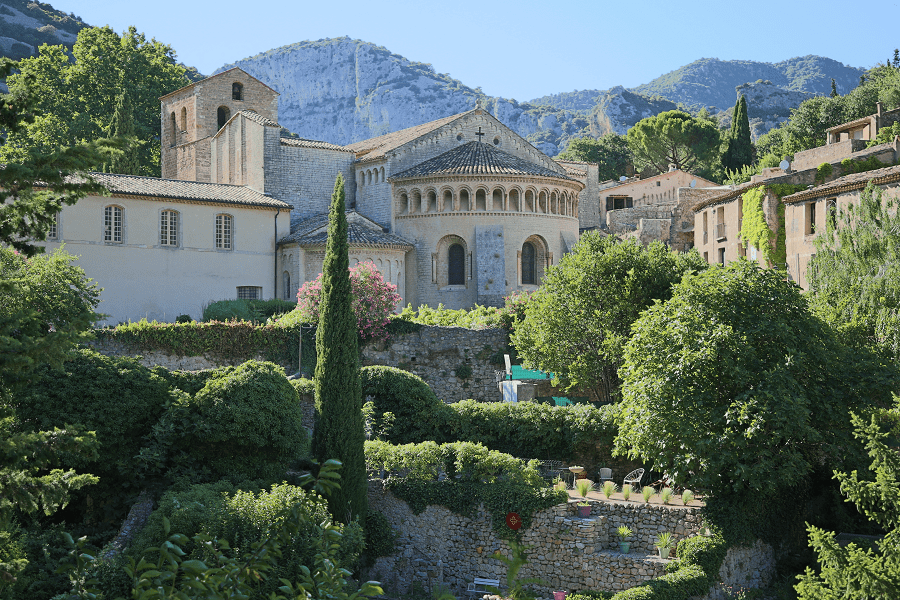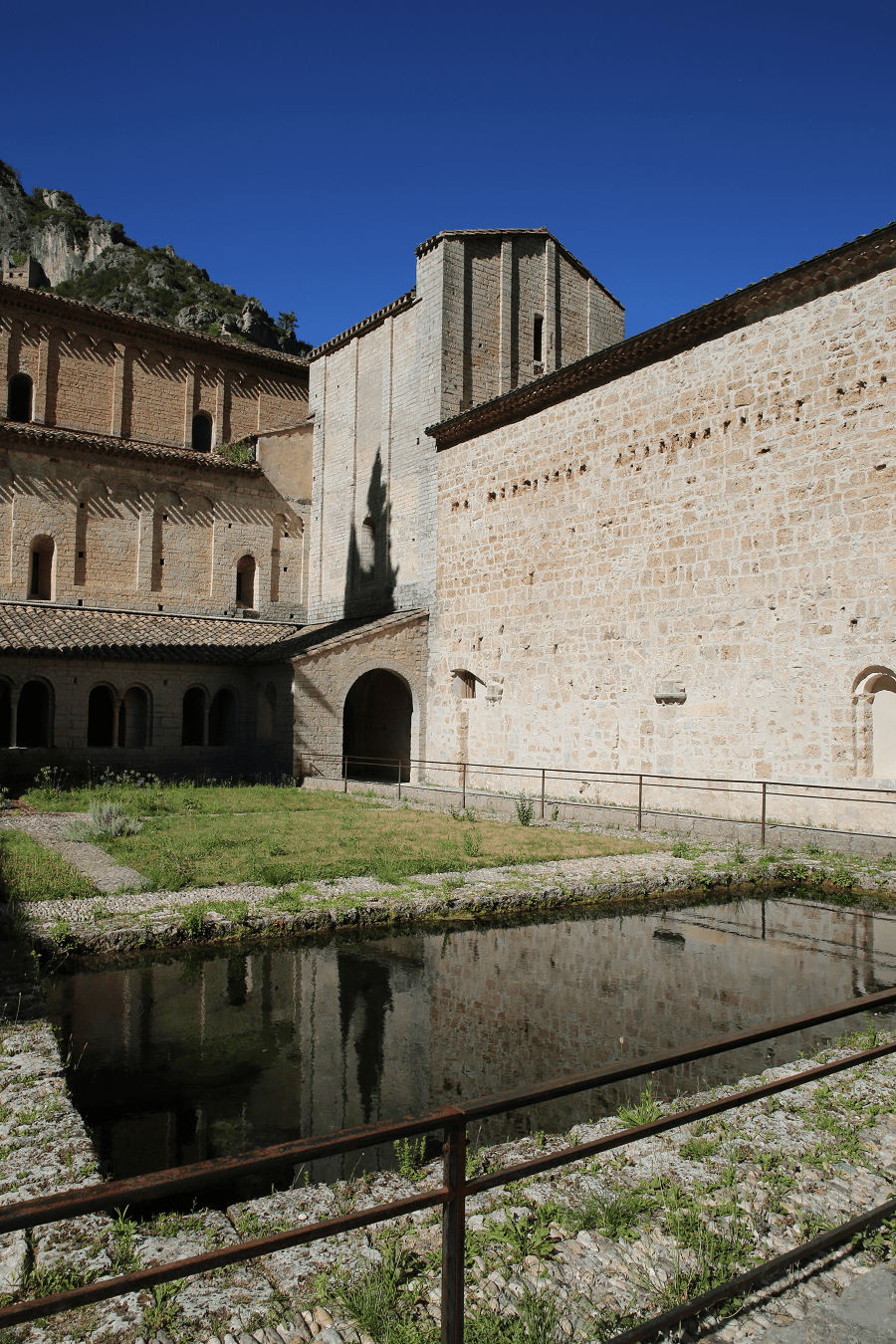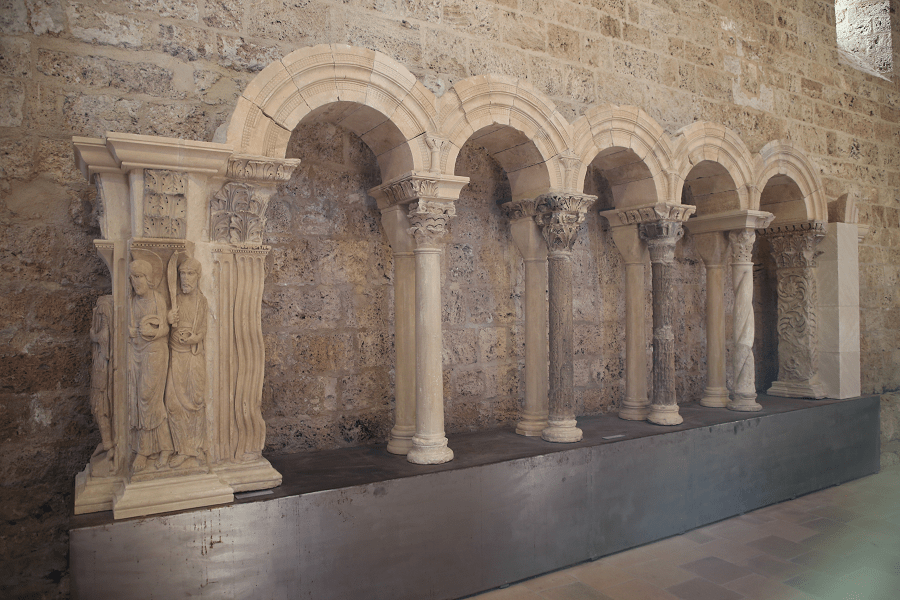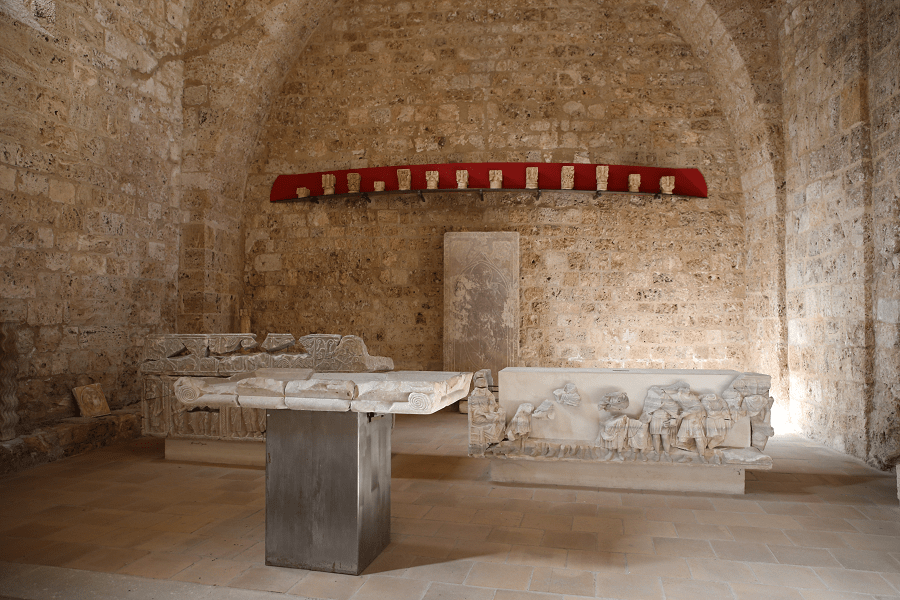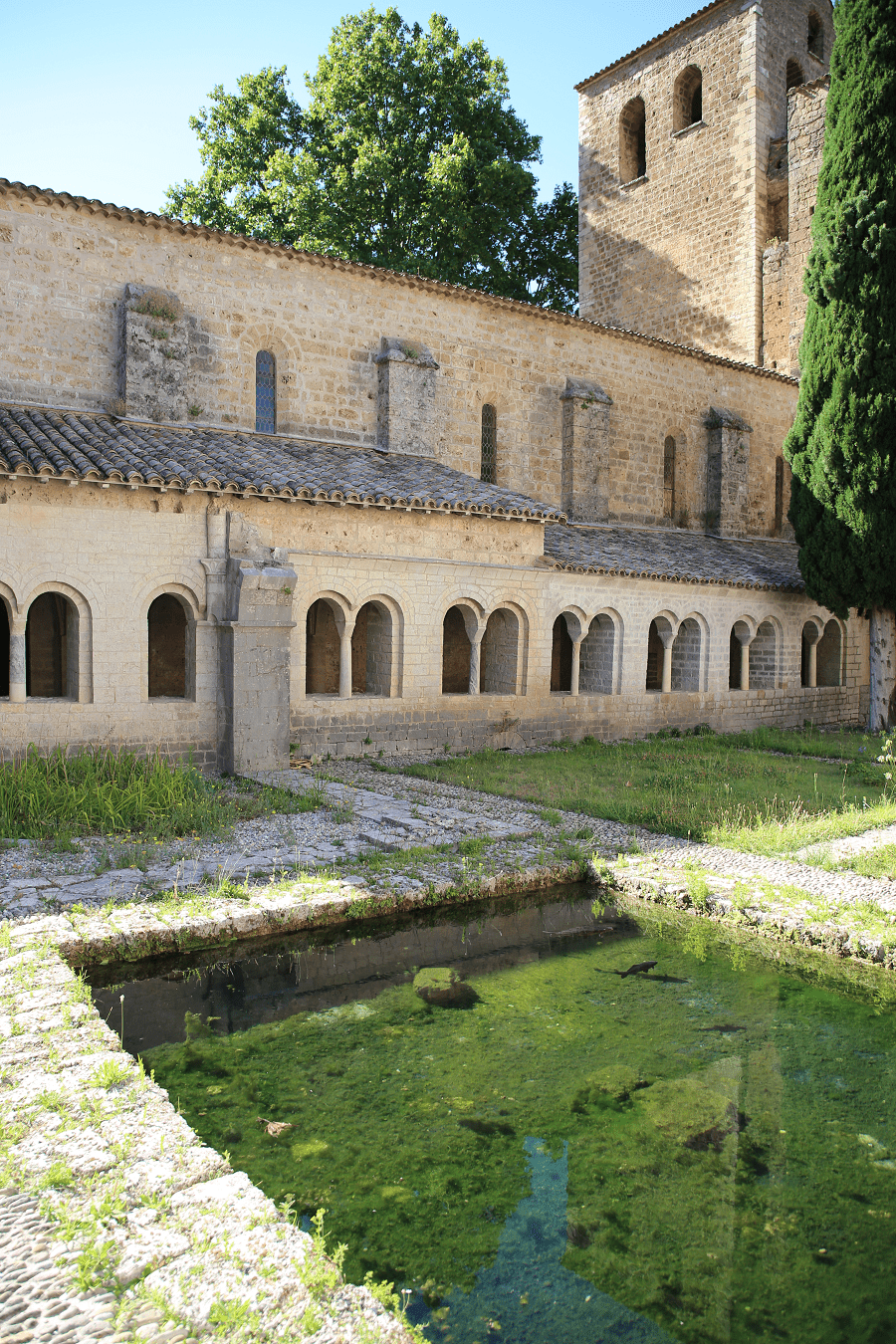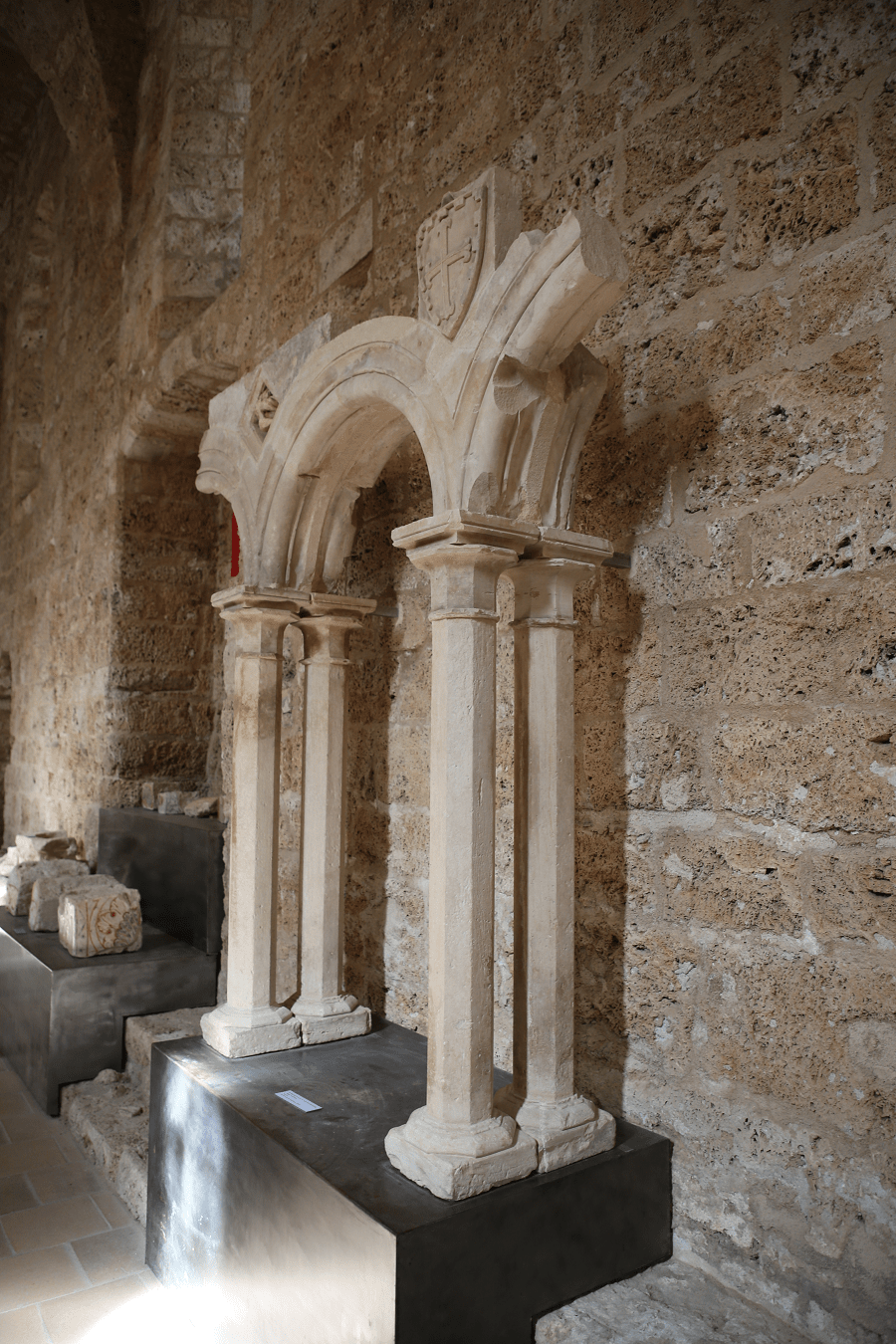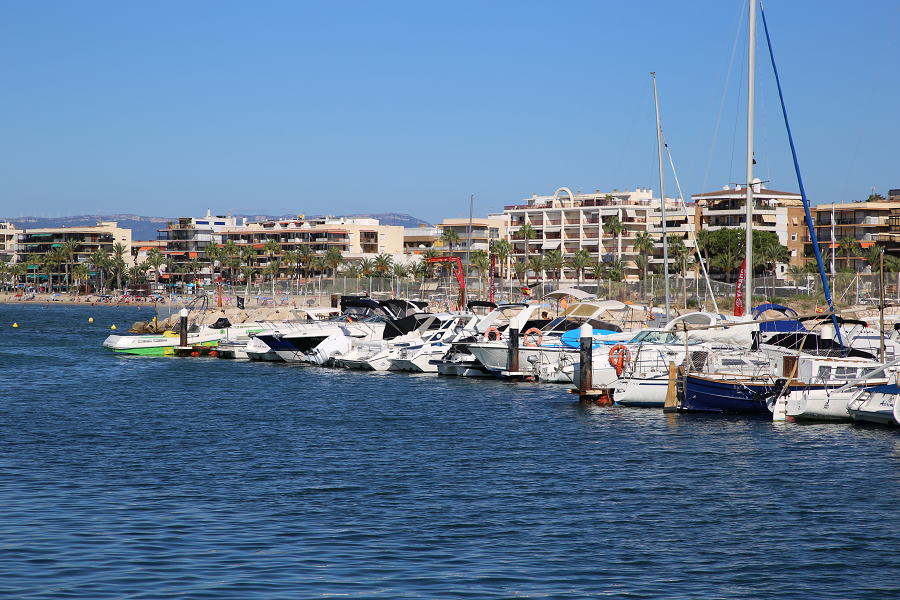Saint-Guilhem-le-Désert Abbey or Gellone Abbey (fr. L’abbaye de Saint-Guilhem-le-Désert ou abbaye Saint-Sauveur de Gellone) is a Benedictine abbey in Saint-Guilhem-le-Désert, Hérault department, Occitania, France, 40 km from Montpellier. It was founded in 804 by an Aquitanian aristocrat of the Carolingian era, William of Gellone (742-812), known in Occitan as ‘Guilhelm’.
It was listed as a historic monument by France in 1840 and as part of the Camino de Santiago to Santiago de Compostela in France Unesco World Heritage Site in 1998 (together with then Devil’s bridge and Saint-Guilhem-le-Désert village).
The foundation of the abbey of Gellone follows the Frankish conquest of Septimania, after the collapse of the Visigoth kingdom under the blows of the Muslims. Son of a count Aiguilf who exercised his power in Maguelone, probably of Gothe origin, Wittiza, better known by his name of Benedict, founded in 782 an abbey on family land, in Aniane. Guillaume, cousin of Charlemagne or Charles the Great and count of Toulouse, in turn created under the influence of Benoît another establishment in Gellone in 804.
The Gellone abbey is dedicated to the Saint-Sauveur; the foundation charter also mentions Saint Mary, Saints Peter, Paul, Andrew, Michael, and all the apostles.
Abbey museum
The abbey’s lapidary museum is located in the former monks’ refectory. It is accessed through the cloister. It contains elements of the upper cloister and various funerary monuments from the abbey, including the sarcophagus of Saint Guilhem, the tomb of Father Bernard de Mèze (1170-1189), the funeral slabs of Father Bernard de Bonneval (1303-1317) and prior Guy de Vissec (died in 1324).
In summer, the abbey of Saint-Guilhem-le-Désert and the chapel of the Penitents are the venues for concerts, especially those of the Rencontres Musicales of Saint-Guilhem-le-Désert, those of the Friends of Saint-Guilhem-le-Désert. Guilhem and the Camerata Mediterranea.
Address: ABBAYE DE GELLONE, 2 Grand Chemin du Val de Gellone, 34150 SAINT-GUILHEM-LE-DESERT
Free entrance, open 01/01/ – 12/31/
Coordinates: 43° 44′ 01″ N, 3° 32′ 56″ E
How to get to?
From Paris: 7 hr 35 min (729 km) via A71 and A75
From Toulouse: 2 hr 34 min (243 km) via A61
From Andorra: 4 hr 20 min (369 km) via A61
From Barcelona: 3 hr 45 min (343 km) via AP-7 and A9
From Madrid: 9 hr 40 min (949 km) via A-2
See here Pyrenees travel guide
See here France travel guide
See here Spain travel guide





